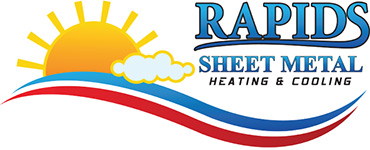
From a relaxing vacation or an extended trip for work, traveling means making preparations for your heating and cooling system. You can't use it as long as you’re not home, so you can adjust it as needed to conserve your energy use. Simultaneously, you don’t want to just shut it down for the entire time you're gone.
In general, it’s best to leave your HVAC system going and just raise or lower depending on the time of year. That way you can minimize energy costs without having to worry about returning to an uncomfortable home. We’ll explain why you should leave your HVAC system on as well as the most energy-efficient thermostat settings for different times of year.
This Is Why You Don't Leave Your Thermostat on Hold
While you may be wanting to leave your HVAC system off before a trip, this could end up causing big problems by the time you come back. This is particularly true when the weather will be severely hot or cold while you’re out of town.
For instance, switching the HVAC system down during the summer will sometimes produce very high humidity. Not only will your home feel muggy and uncomfortable when you have returned, but it may have also invited mold/mildew growth or pest infestations.
And over the winter, letting your house get cold will sometimes lead to pipes icing over or even bursting. It’s an awful feeling to come home from a long trip only to discover considerable water damage nearby a broken pipe.
Energy-Efficient Thermostat Settings While at Work
You can make temperature adjustments even if you’re coming and going to work. Because you’re away for about 8 hours or longer, it doesn’t help your monthly energy bill to keep an empty home the same temperature as when you're home. Generally, it’s encouraged to adjust the thermostat by 5 degrees or more. This means that if you prefer a comfortable 72 degrees, think about raising it to 76-77 while you’re out.
But you could save even more if you’re willing to further adjust the temperature. As stated by the Department of Energy, you might save about 10% on your HVAC spending by raising the temperature by about 7-10 degrees.
Ideal Thermostat Settings While on a Trip in Summer
If you’re leaving for an extended trip in the heart of summer, you can make more significant adjustments. This ensures you don’t waste energy while still protecting your home from the problems that come with leaving it un-air conditioned. Around 5 degrees is appropriate for short trips while a larger adjustment of 10 degrees is best if you’ll be away from home for 2 weeks or more. If you prefer keeping the house at 72 in the summer, 78-82 will offer great results.
Best Thermostat Settings While On a Trip in Winter
To determine the ideal thermostat setting for a winter vacation, just lower the temperature by the same amount you would adjust it in summer. 68 is a common winter thermostat setting, so turning it down to 63-58 will keep your plumbing safe while restricting how often your furnace operates.
Smart Thermostats Are Even Better: Advantages of Smart Thermostat Installation
An ideal strategy to regulate your home’s HVAC system while away from home is by investing in a smart thermostat. This special type of programmable thermostat utilizes intelligent software to understand your usual comfort habits. It learns these preferences and makes automatic corrections to the schedule for higher energy efficiency. And with Wi-Fi compatibility, you can remotely control your HVAC system from a mobile device or tablet.
Smart thermostats are stuffed with features to help you save even more. For example, some models can monitor electricity prices to boost heating or cooling when prices are lower. They can also work with high-efficiency, variable-speed equipment to optimize how long your HVAC system needs to run. It’s the perfect tool to simplify how you use your comfort system. If you’re considering investing in a smart thermostat, there are multiple ways you can reduce your costs, essentially getting a smart thermostat for free. The next time you leave for vacation, you can appreciate true peace of mind that your HVAC system won’t cause any trouble while you’re gone.
